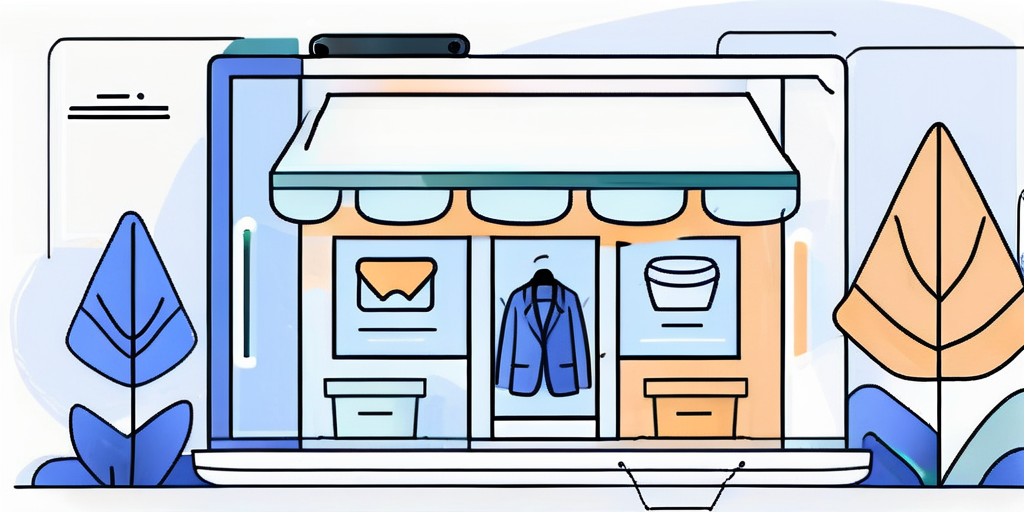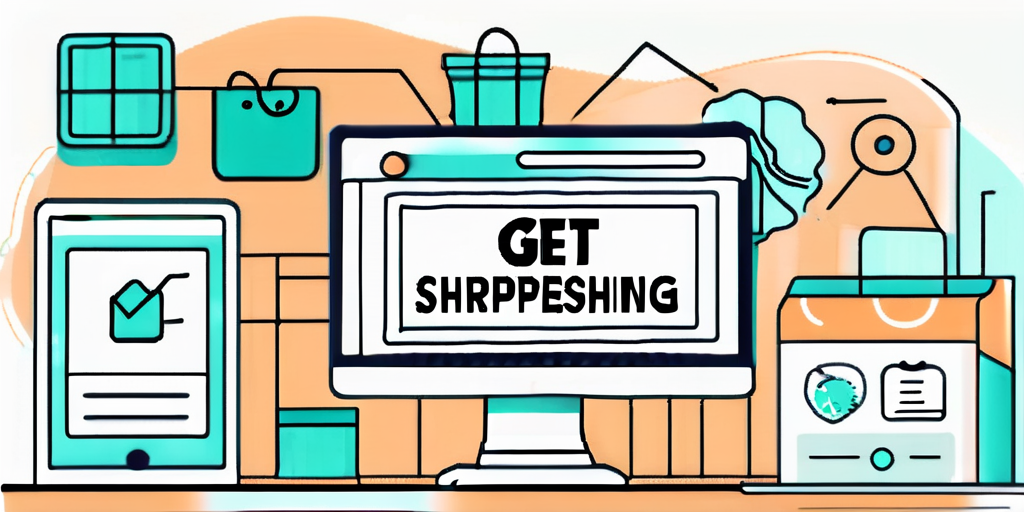Dropshipping has become a popular business model in the e-commerce industry. It offers entrepreneurs a way to start an online store without the need to inventory products or worry about shipping logistics. In this comprehensive guide, we will delve into the basics of dropshipping, its advantages and disadvantages, how it works, and how you can get started with this business model.
Understanding the Basics of Dropshipping
Defining Dropshipping
Dropshipping is a retail fulfillment method where store owners don’t keep the products they sell in stock. Instead, they partner with suppliers who ship products directly to the customers’ doors. Dropshippers act as intermediaries between the customers and the suppliers, handling the order process and customer service.
The Role of Dropshipping in E-commerce
In the ever-growing world of e-commerce, dropshipping plays a significant role. It enables entrepreneurs to quickly launch an online store with minimal upfront costs. By eliminating the need for inventory management and order fulfillment, dropshipping allows entrepreneurs to focus on marketing and growing their business.
Key Components of a Dropshipping Business
A successful dropshipping business relies on several key components. First and foremost, you need a robust online store where customers can browse and purchase products. Secondly, reliable suppliers are essential for sourcing quality products and ensuring timely deliveries. Finally, an effective marketing strategy is crucial to drive traffic to your store and boost sales.
When it comes to building a robust online store, it’s important to consider the user experience. A well-designed and user-friendly website can make a significant difference in attracting and retaining customers. From intuitive navigation to clear product descriptions and high-quality images, every aspect of your online store should be optimized to provide a seamless shopping experience.
Furthermore, finding reliable suppliers is crucial for the success of your dropshipping business. Conduct thorough research to identify suppliers who offer high-quality products, competitive pricing, and reliable shipping services. Building strong relationships with your suppliers can also lead to better deals, faster shipping times, and improved customer satisfaction.
Lastly, an effective marketing strategy is essential for driving traffic to your online store and increasing sales. Utilize various digital marketing channels such as social media, search engine optimization (SEO), and email marketing to reach your target audience. Engage with your customers through compelling content, promotions, and personalized offers to build brand loyalty and encourage repeat purchases.
Advantages and Disadvantages of Dropshipping
Pros of Using the Dropshipping Model
Dropshipping offers several advantages for aspiring entrepreneurs. One of the main benefits is the low startup cost. Since you don’t need to invest in inventory upfront, you can start your business with minimal financial risk. This means that even if you’re just starting out or working with a limited budget, dropshipping allows you to dip your toes into the world of entrepreneurship without breaking the bank.

Additionally, dropshipping allows you to offer a vast range of products to your customers without the need for physical storage space. Imagine having an online store that offers thousands of different products, all without the hassle of managing a warehouse or worrying about inventory management. With dropshipping, the world of ecommerce becomes your oyster, and you can cater to a wide variety of customer preferences and demands.
Another advantage is the flexibility it provides. You can run your dropshipping business from anywhere in the world as long as you have an internet connection. This flexibility makes it an attractive option for digital nomads and those seeking a location-independent lifestyle. Whether you want to work from the comfort of your own home, travel the world while managing your business, or even set up shop in a cozy cafe, dropshipping allows you the freedom to choose your own work environment.
Furthermore, with dropshipping, you have the freedom to test and tweak your product offerings easily. Since you’re not bound by the constraints of physical inventory, you can experiment with different products, niches, and target markets without the fear of being stuck with unsold items. This flexibility enables you to adapt to changing market trends and customer preferences, ensuring that your business stays relevant and profitable in the long run.
Cons of the Dropshipping Business Model
While dropshipping has its advantages, it also comes with some challenges. One of the main drawbacks is the lower profit margins compared to traditional retail models. Since you are not manufacturing or storing the products, your costs are higher per unit sold. This means that you need to carefully consider your pricing strategy and find ways to optimize your operations to maintain a healthy profit margin.
Additionally, relying on suppliers for inventory and fulfillment means you have less control over the order processing and shipping times. While most suppliers strive to provide efficient and reliable service, there may be instances where delays or mistakes occur. It’s important to establish strong relationships with your suppliers and have clear communication channels to minimize any potential disruptions to your customers’ experience.
Another potential challenge is the intense competition within the dropshipping industry. As the barrier to entry is low, many entrepreneurs are attracted to this business model. This means that you’ll need to put in extra effort to stand out from the crowd and build a successful dropshipping store. Careful product selection, branding, and marketing strategies are crucial to differentiate yourself and create a unique selling proposition that resonates with your target audience.
Despite these challenges, dropshipping can be a rewarding and profitable venture for those who are willing to put in the time and effort to overcome obstacles. By understanding the advantages and disadvantages of the dropshipping business model, you can make informed decisions and set yourself up for success in the exciting world of ecommerce.
How Does Dropshipping Work?
The Dropshipping Process Explained
Understanding the dropshipping process is crucial for anyone looking to start a dropshipping business. It begins with setting up your online store and choosing the products you want to sell. Once you have identified your target market, you need to find reliable suppliers who can fulfill customer orders. When a customer places an order on your website, you notify the supplier, who then ships the product directly to the customer.

Role of Suppliers in Dropshipping
The success of a dropshipping business heavily relies on the relationship with suppliers. It’s crucial to establish partnerships with reliable suppliers who offer quality products and excellent customer service. Communication and transparency are key when working with suppliers. Regularly updating them about your inventory levels and addressing any issues promptly will help maintain a positive relationship.
Role of Retailers in Dropshipping
As a dropshipping retailer, your role is to create a seamless shopping experience for your customers. This involves designing an attractive online store, curating a product catalog, providing accurate product descriptions, and offering exceptional customer service. Building trust and a strong brand reputation are vital for the long-term success of your dropshipping business.
Let’s delve deeper into the role of suppliers in dropshipping. When selecting suppliers, it’s important to consider factors such as their product range, pricing, shipping options, and reliability. You want to ensure that the suppliers you choose can consistently deliver high-quality products to your customers. Conducting thorough research and reaching out to multiple suppliers can help you make informed decisions.
Moreover, maintaining open lines of communication with your suppliers is essential. Regularly checking in with them to discuss inventory levels, new product launches, and any potential issues can help you stay on top of your business operations. By fostering a strong relationship with your suppliers, you can work together to overcome challenges and optimize your dropshipping process.
Getting Started with Dropshipping
Choosing the Right Products for Dropshipping
Product selection is a critical decision that can determine the success of your dropshipping business. It’s essential to consider factors such as market demand, competition, and profit margins when choosing products. Conducting thorough research and identifying niche markets can help you find unique and profitable products to offer your customers.

When conducting your research, it’s important to dive deep into understanding the needs and preferences of your target audience. By analyzing trends and consumer behavior, you can uncover valuable insights that will guide your product selection process. For example, if you’re targeting fitness enthusiasts, you might discover that there is a growing demand for eco-friendly workout gear. Armed with this knowledge, you can source products that align with this trend, giving you a competitive edge in the market.
Selecting a Reliable Supplier
Partnering with reliable suppliers is crucial for the smooth operation of your dropshipping business. Look for suppliers who offer quality products, competitive pricing, and fast shipping times. Reading reviews and contacting suppliers directly can help you assess their reliability and customer service. Building strong relationships with your suppliers will ensure a steady supply of products and timely order fulfillment.
When evaluating potential suppliers, it’s also important to consider their inventory management capabilities. A supplier with efficient inventory management systems can help prevent stockouts and minimize order fulfillment delays. This is especially crucial during peak seasons or when dealing with high-demand products. By partnering with suppliers who have robust inventory management processes in place, you can avoid disappointing your customers and maintain a positive reputation for your business.
Setting Up Your Dropshipping Store
Setting up your dropshipping store involves choosing an e-commerce platform, customizing your website, and optimizing it for conversions. Selecting a user-friendly platform that offers integration with dropshipping apps can simplify the process and automate various tasks. Creating compelling product pages, optimizing SEO, and implementing effective marketing strategies are essential steps to drive traffic and generate sales.
When customizing your website, it’s important to create a seamless and intuitive user experience. This includes designing a visually appealing layout, optimizing page loading speed, and ensuring mobile responsiveness. By providing a user-friendly interface, you can enhance customer satisfaction and increase the likelihood of repeat purchases.
Furthermore, implementing effective marketing strategies is crucial for attracting potential customers to your dropshipping store. This can include utilizing social media platforms, running targeted advertising campaigns, and leveraging influencer partnerships. By strategically promoting your products and brand, you can increase brand awareness and drive traffic to your website, ultimately leading to higher conversion rates and sales.
In conclusion, dropshipping offers a lucrative opportunity for entrepreneurs to start an online store with minimal upfront costs. By understanding the basics of dropshipping, its advantages and disadvantages, the dropshipping process, and how to get started, you can embark on an exciting journey in the world of e-commerce. With careful product selection, reliable supplier partnerships, and a well-optimized dropshipping store, you can position yourself for success in this competitive industry.

